
Lot 53
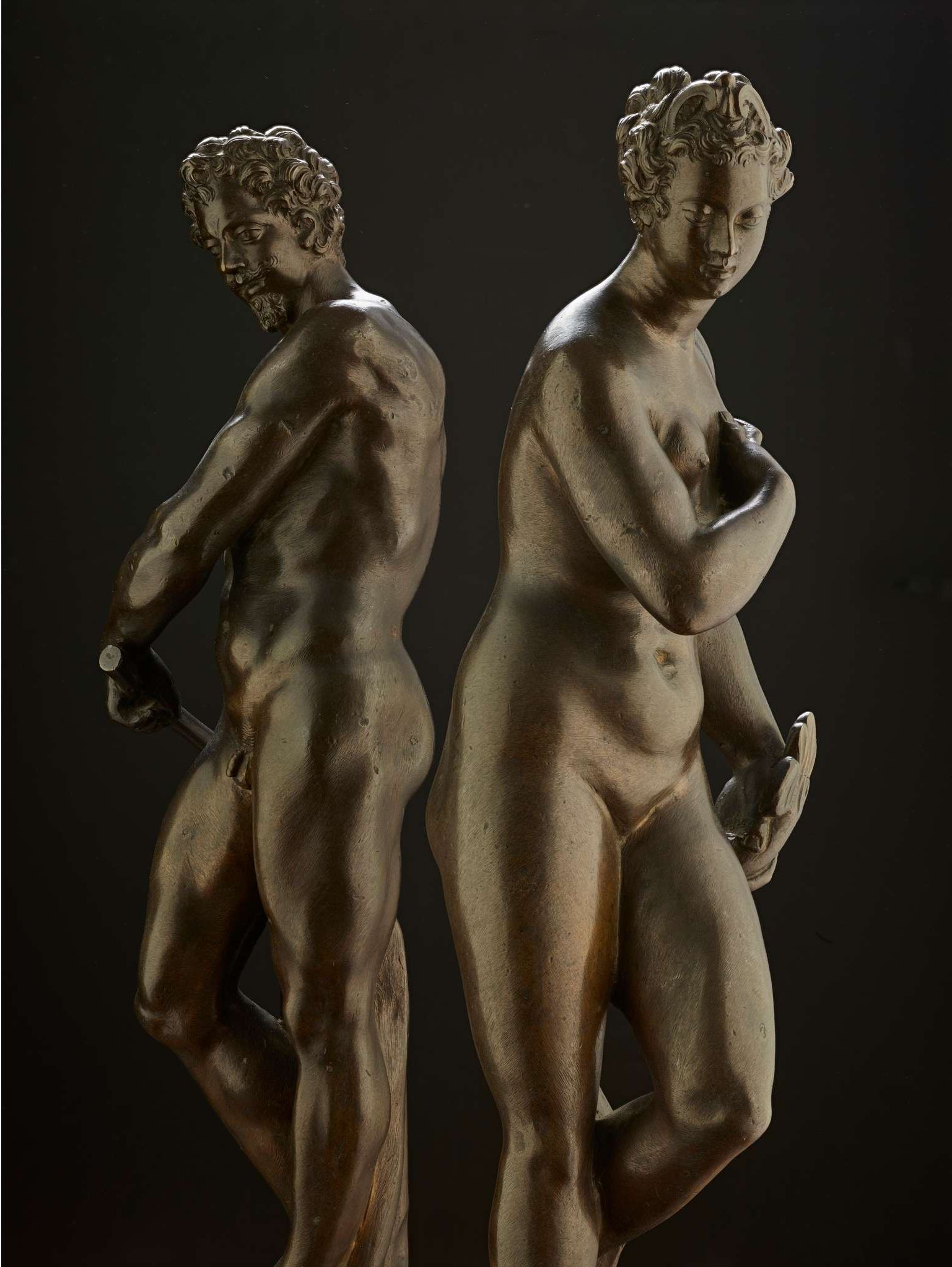
A PAIR OF BRONZE FIGURES OF VULCAN AND VENUS MARINA, ATTRIBUTED TO TIZIANO ASPETTI (1565-1607)
VENICE, LATE 16TH CENTURY
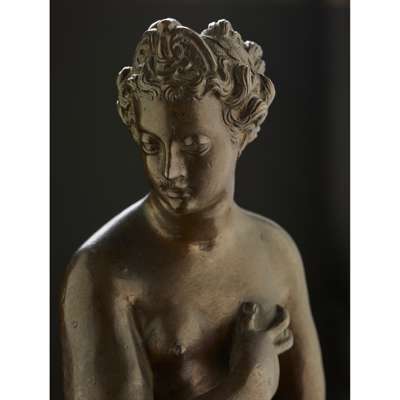
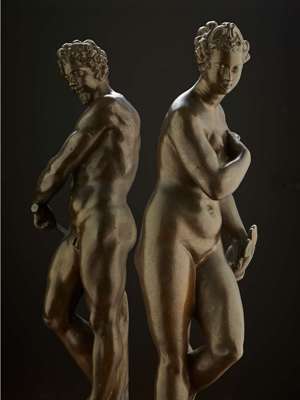
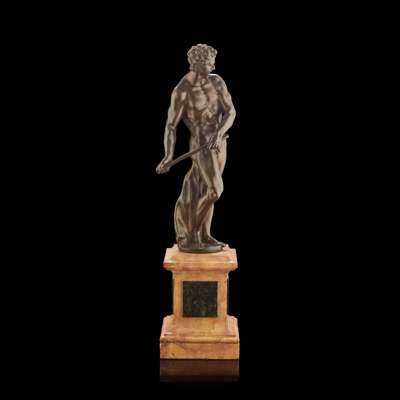
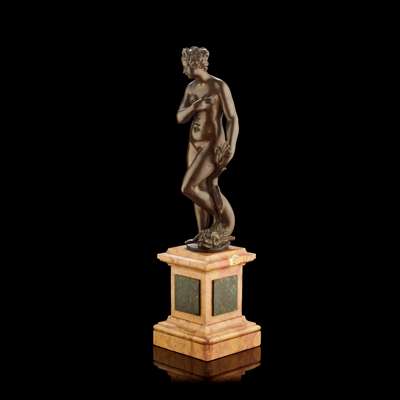
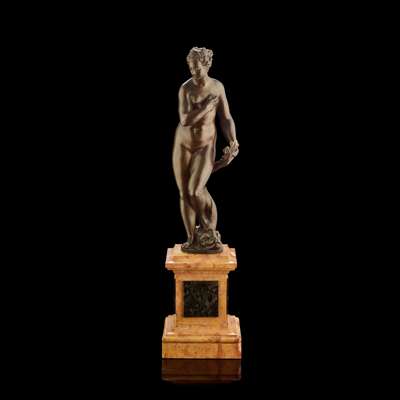
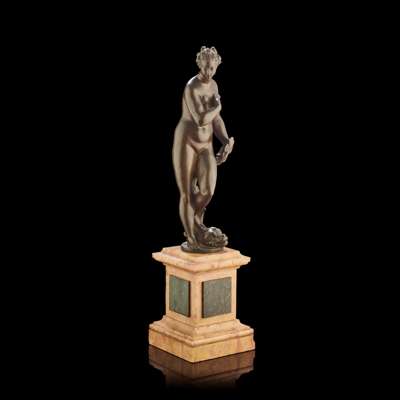
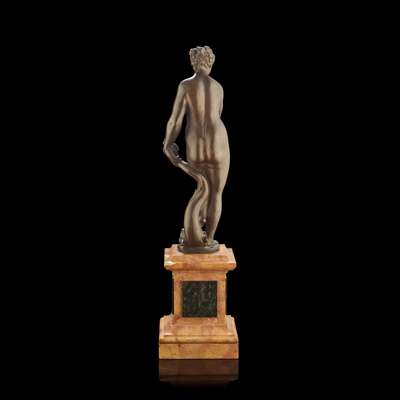
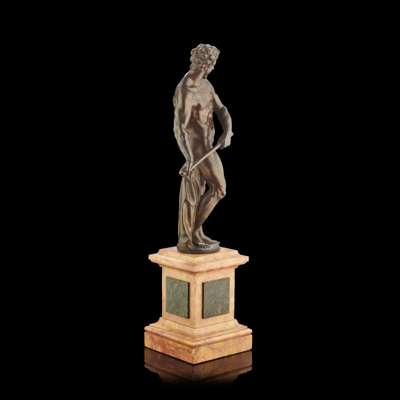
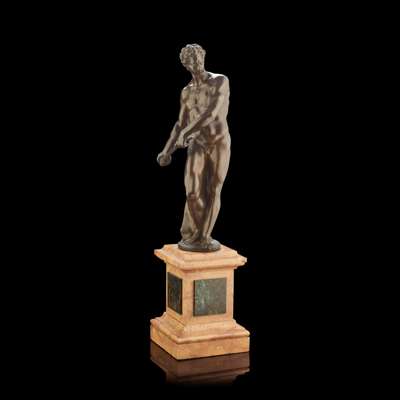
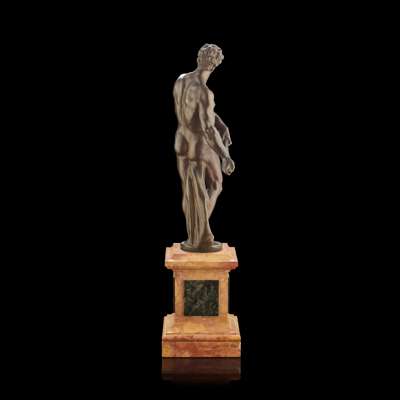
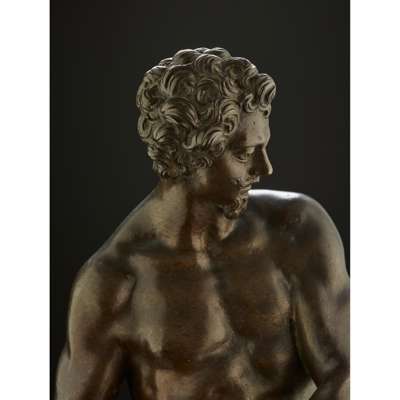
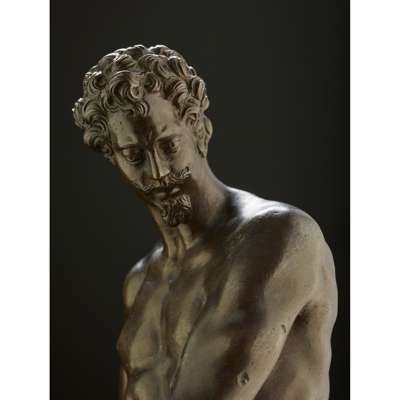
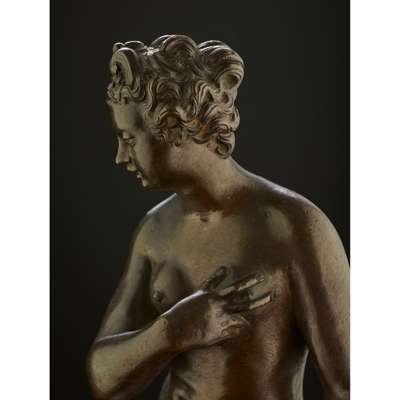
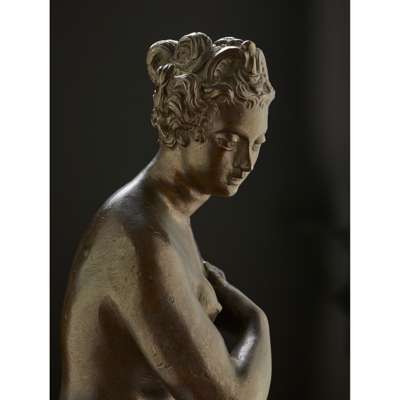



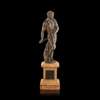
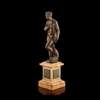
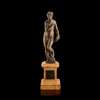
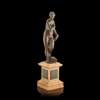
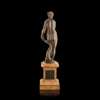
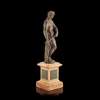
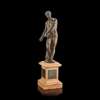
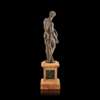
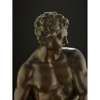
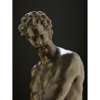
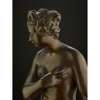
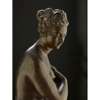
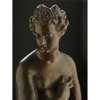
Auction: 15 January 2025 from 10:00 GMT
Description
black and brown patinas in places, both subjects depicted naked, Vulcan holding a hammer (mallet lacking), standing against a draped column; Venus depicted naked with her left foot resting on a dolphin, both raised on square breche marble pedestals with applied verde antico marble panels
Dimensions
Vulcan 43cm high, 65cm overall; Venus 42.5cm high, 64.5cm overall
Provenance
King Leopold of Belgium;
Sotheby's, 7 April 1970, lot 96.
Footnote
Comparative Literature:
Leo Planiscig, Venezianische Bildhauer der Renaissance, Vienna, 1921, fig. 616;
Laura Camins, Renaissance and Baroque Bronzes from the Abbot Guggenheim collection, San Francisco, 1988, pp. 57-59, cat no. 17;
Claudia Kryza-Gersch, in Debra Pincus (ed.), Small Bronzes in the Renaissance, Washington, D.C., 2001, p. 150, no. 13 and 14;
P. Motture, ‘The Production of Firedogs in Renaissance Venice’, in P. Motture (ed), Large Bronzes in the Renaissance, New Haven and London, 2003, pp. 277 - 307.
Tiziano Aspetti (1565-1607) was the leading sculptor in Venice at the end of the 16th century and an important figure in the Italian ‘High Renaissance’. Other versions of these bronzes attributed to Aspetti exist, as identified by Leo Planiscig and Laura Camins. The earliest compositions depict the figures of Vulcan and Venus, but by modifying their attributes and costumes, the pair could also represent the male figure as Mars, Neptune or Mercury, with the female representing Venus, Minerva or Vigilance (see L. Planiscig, Venezianische Bildhauer der Renaissance, Vienna, 1921, pp. 616-644). The general composition of these figures remains consistent, and corresponds to a mannered pose in contrapposto. Here Vulcan is shown as a beardless muscular young man with curly hair wielding his hammer, and bears similarities to other male figures in Aspetti's bronze reliefs of the Martyrdom of Saint Daniel for the Duomo, Padua and now in the collection of the Metropolitan Museum of Art, New York. Aspetti addressed the subject of Vulcan in a marble relief carved in 1589 for a chimneypiece in the Sala dell'Anticollegio in the Palazzo Ducale, Venice, see M. Benacchio, Tiziano Aspetti, Vol. II, p. 114, fig. 113. The figure of Venus Marina is derived from a stone statue by Girolamo Campagna (1549–1625) on the Libreria Marciana, Venice. Here, Venus is shown naked with her right arm across her bare breast, standing beside a dolphin whose tail she holds in her left hand while resting her bent left leg on its back. The attribute of dolphin references Venus’ birth from the sea, as well as the city of Venice’s lagoon location, nautical prowess, and naval power. Vulcan is significant to both the city and the wider Veneto region, well-known for their bronze foundries, particularly the towns of Padua, Brescia and Verona. The pairing of Vulcan and Venus Marina neatly represents the concept of the triumph of Vulcan’s forge in Venus’ city, a celebration of the mastery of bronze manufacture by the sculptors and founders of the city of Venice based in and around La Serenissima during the late 16th century.
Figures of Vulcan and Venus Marina were often used as standing finials on large andirons in Venetian palazzi, and versions that relate to the present pair exist. It is likely though that these statues, with their fine finishing and crisp details, were intended as freestanding, independent sculptures.





























